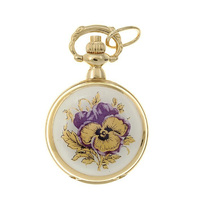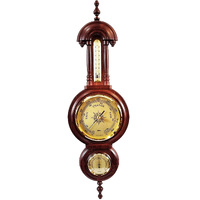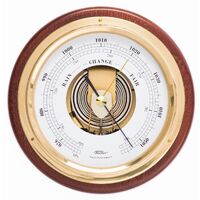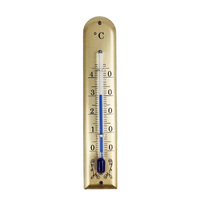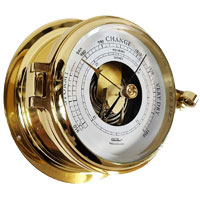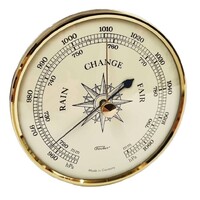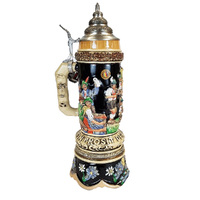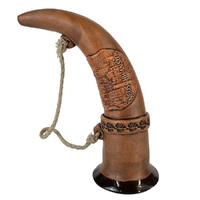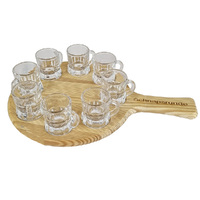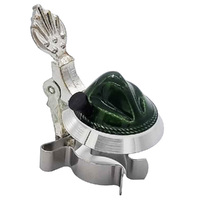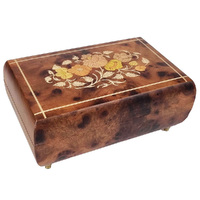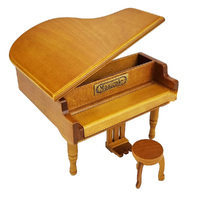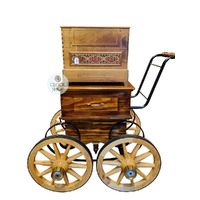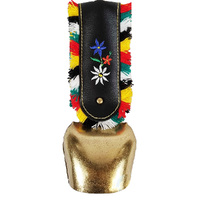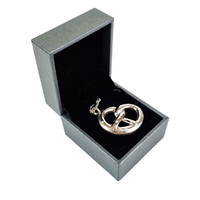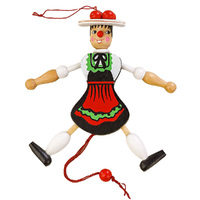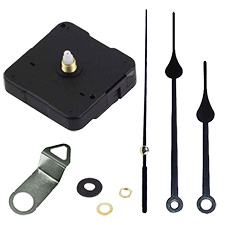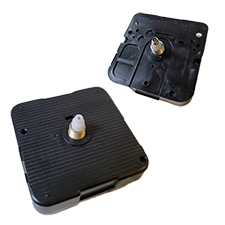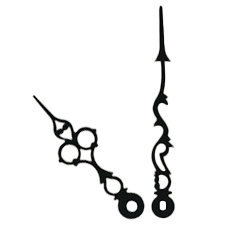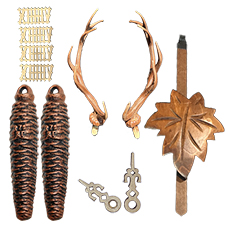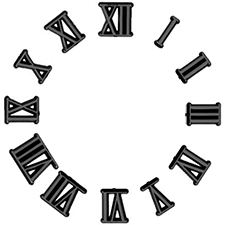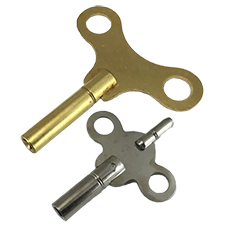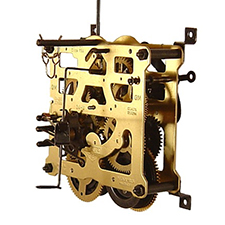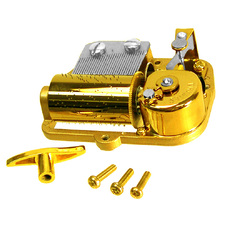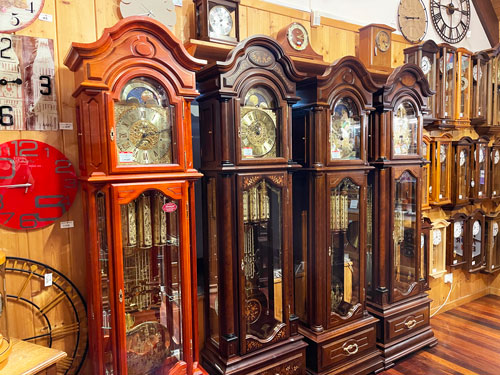History of the Pendulum Clock
Author: Clock Shop

The idea of a pendulum has existed for over 400 years. From its humble beginnings through to the modern day, pendulums have found a home with many different clocks- from grandfather clocks to cuckoo clocks and a number of clocks in between, but have you ever wondered what the purpose of the pendulum is and where did it come from? The invention of the pendulum ultimately changed timekeeping and scientific technology altogether, with the design credited to three brilliant minds from the Scientific Revolution.
Humans have been recording time for tens of thousands of years, though it can be assumed that for as long as humankind has existed, our ancestors have noticed the cycles of day and night, the phases of the Moon and the changing of the seasons. A 10,000 year old lunar calendar was recently uncovered in Aberdeen, Scotland, whilst numerous archaeological records show that the ancient Egyptians and Babylonians were measuring time at least 5000 years ago. These advanced civilisations developed calendars and sundials to assist their cycles of planting and harvesting, and to record the cycle of time. Over the following centuries, many methods were developed to assist in measuring time, from shadow clocks to water clocks, candle clocks and incense clocks, though these methods were not very accurate and could not tell the time to the minute.
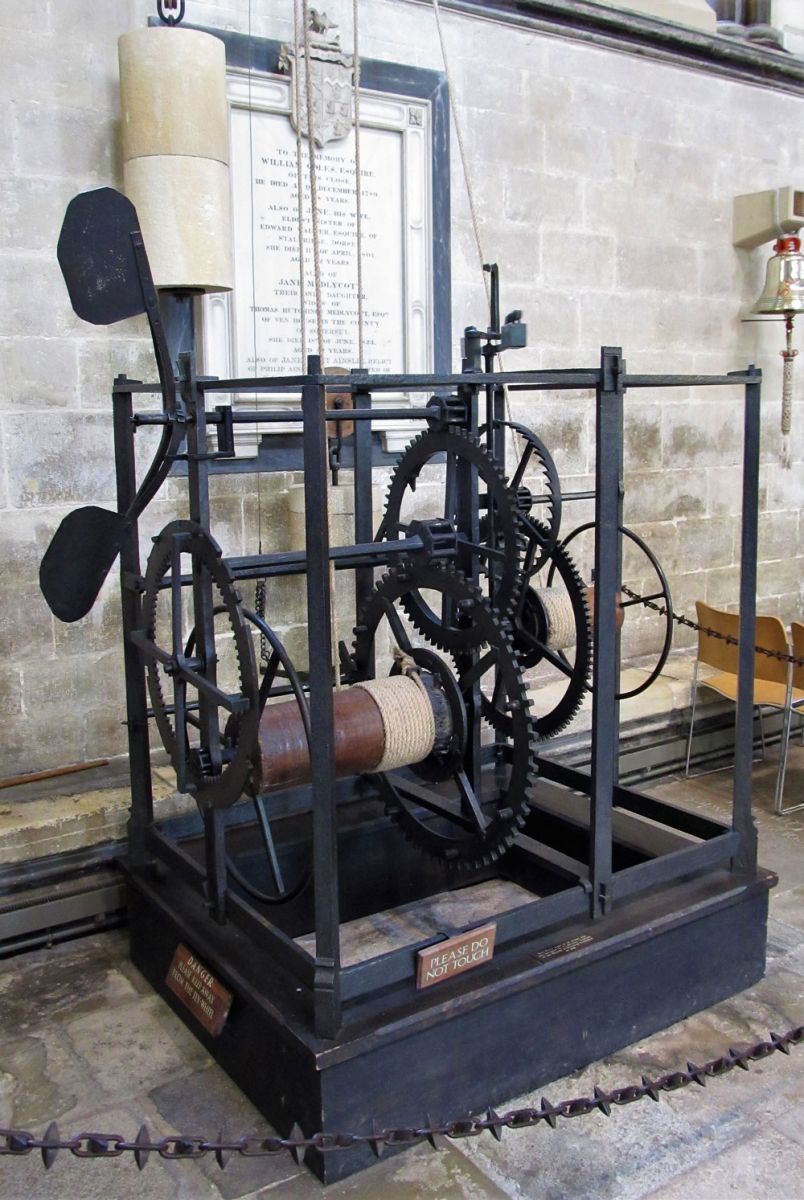
Image source: The Faceless Clock (Wikipedia)
The first relatively accurate mechanical clock was invented in Medieval Europe in the 1300’s, ushering in a new era for medieval technology. The oldest surviving clock from this era that is still running today is named the ‘faceless clock’, located at Salisbury Cathedral in the UK. This clock dates back to 1386, and has struck the time for 636 years (and counting), and has ticked more than 500 million times. Clocks such as the faceless clock remained the standard timekeeping method for over 300 years until the invention of the pendulum clock in the 1600’s changed the course of timekeeping history forever.
The idea of a pendulum was developed from a simple observation in the year 1584, when a young Galileo Galilei was watching a lamp swinging side to side from a ceiling of a cathedral. By watching the lamp swing, Galileo used his pulse to measure the length of time that it took the lamp to swing from side to side. From this observation, Galileo was able to determine the length of time it took for any object suspended from a rope or a chain (a pendulum) to swing back and forth. He observed that no matter what size the swing was when the lamp first started swinging, the time it took for each swing to complete was the exact same, right down to the length of swing when the lamp finally stopped swinging.
Shortly after this, Galileo held a public demonstration at the Leaning Tower of Pisa, showing that falling bodies of different sizes and weights would always descend at the same rate. This is due to the Earth's force of gravity, which determines that all objects are affected by the force of gravity, and thus fall at the same rate in a vacuum, where its motion is not affected by mass, weight, density or any other measurement. Unknowingly, Galileo has discovered the "isochronism of the pendulum" aka the "law of the pendulum", a law which would later be used as a means to regulate clocks. This law stated that pendulums of the same length all have the same oscillation period.
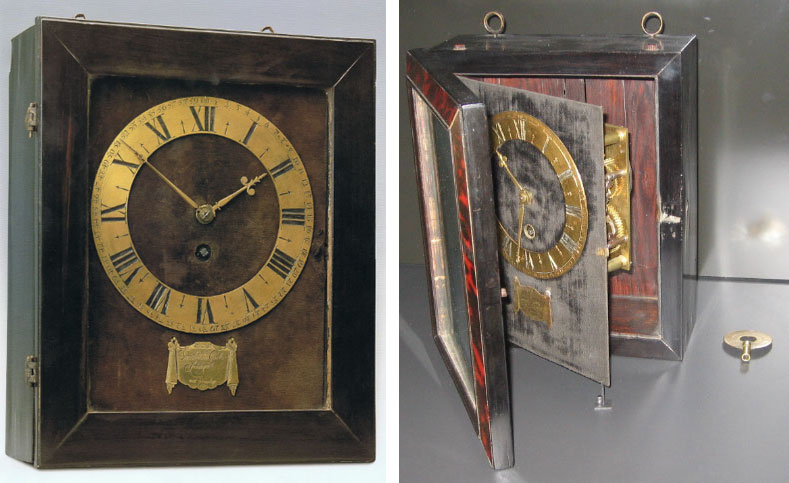
Image source: ‘Haagsche Klokje’ by Salomon Coster (credit: antique-horology.org and Wikipedia)
Just 72 years later in the year 1656, a brilliant Dutch scientist named Christiaan Huygens developed the idea for the first successful pendulum clock, inspired by the earlier works discovered by Galileo. Huygens commissioned an experienced Dutch clockmaker named Salomon Coster the exclusive rights to build this pendulum clock. This clock is named ‘Haagsche Klokje’, and is the oldest known Huygens/Coster pendulum clock still in existence, currently on display at Museum Boerhaave in the Netherlands. This clock was the earliest pendulum clock ever made, and used a pendulum to control a standard spring driven clock with a verge escapement, with a wide pendulum swing of 100 degrees. The addition of a pendulum as a harmonic oscillator in a clock was one of the most fundamental scientific advancements in the history of time measurement during the Scientific Revolution, as it increased the accuracy of clocks of the time from 15 minutes deviation a day down to an astonishing 15 seconds. This new level of timekeeping was unheard of and it heralded in a new beginning for the horology industry.
Christiaan Huygens was a scientist, mathematician, horologist, physicist, engineer, astronomer and inventor, considered one of the most important figures of the Scientific revolution. With his invention of the pendulum clock, this became the most accurate timekeeping method for over 300 years, and was considered the world standard for timekeeping until the invention of the quartz clock in 1927.
Huygens’ horological research into clocks resulted in an in-depth analysis of the pendulum, in his written piece ‘Horologium Oscillatorium’ in 1673, which mostly covers the motion of pendulums and curves, along with some descriptions of clock designs. In this piece, Huygens showed that wide swings made the pendulum inaccurate, resulting in the period of the clock to vary in the driving force of the movement.
The invention of the anchor escapement in the late 1600s reduced the swing of the pendulum down to approximately 6 degrees, with the anchor becoming the standard escapement used in pendulum clocks built from this time. This resulted in increased accuracy, with the narrow swing of the pendulum allowing the case of the clock to accommodate longer pendulums which did not need as much power or speed. This in turn caused less strain and wear on the movement. In 1671, London clockmaker William Clement, was the first to invent and apply the anchor escapement to the clock, using a seconds pendulum 100 cm in length that vibrated through a small arc, thus making the design of the pendulum clock possible.
With the pioneering work of Galileo, Huygens, Coster and Clement, the four key elements for a grandfather clock were established- a weight which provided the power; the train; the escapement; and the pendulum, all housed inside exquisitely designed wooden casings that stood between 1.8 and 2.4 metres tall. Over time the pendulums became longer, which allowed for slower movement and less winding of the clock, resulting in higher accuracy- thus leading to the original name of ‘Longcase Clock’, a name that truly speaks for itself. Originally designed with two varieties of wound time, including an 8 day or a 30 hour movement, today most grandfather clocks display 8 day mechanisms.
The invention of the pendulum has opened up the door to so many advancements in scientific discoveries, from accurate time measurement to more accurate astronomical observations, as well as for use in metronomes, seismometers for earthquakes, and in amusement park rides. There is no doubt that the invention of the humble pendulum has advanced human civilisation throughout the centuries, all from a simple observation of a ceiling lamp by Galileo.
Today, many types of clocks feature pendulums, from battery clocks and mechanical clocks, to cuckoo clocks, grandfather clocks, traditional wall clocks, and even modern wall clocks. Similarly, a regulator clock is a similar weight driven clock which is regulated by a swinging pendulum. This type of clock was invented in the late 1700’s, to improve the accuracy of spring wound clocks. Regulator wall clocks are available in both striking and chiming weight driven models, and rather than winding a spring in the dial, the weights are wound similar to that of a grandfather clock. Some models are both weight and spring wound, so the weight delivers constant power to the pendulum to keep the time, whilst the chimes and strike are operated by springs. This type requires winding using a crank key in the dial, with the weights suspended from a carriage that moves on a cable, which gets wound once a week.
For a wide selection of high quality pendulum clocks, look no further than the Clock Shop. On offer is a variety of both timeless and modern German made pendulum clocks for sale, from a handful of carefully selected companies that are renowned for their high quality craftsmanship.
Comments (1)
Thanks for sharing
By: Charlene Young Wright on 20 December 2024Amazing how time invention has survived through time.




















